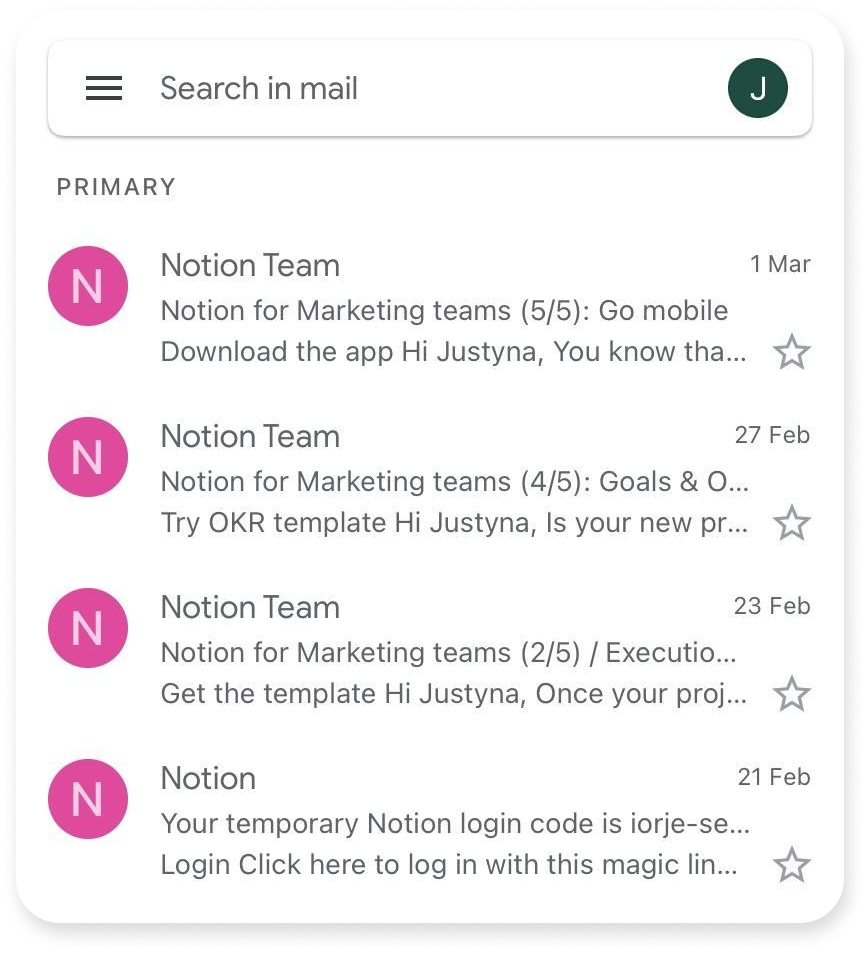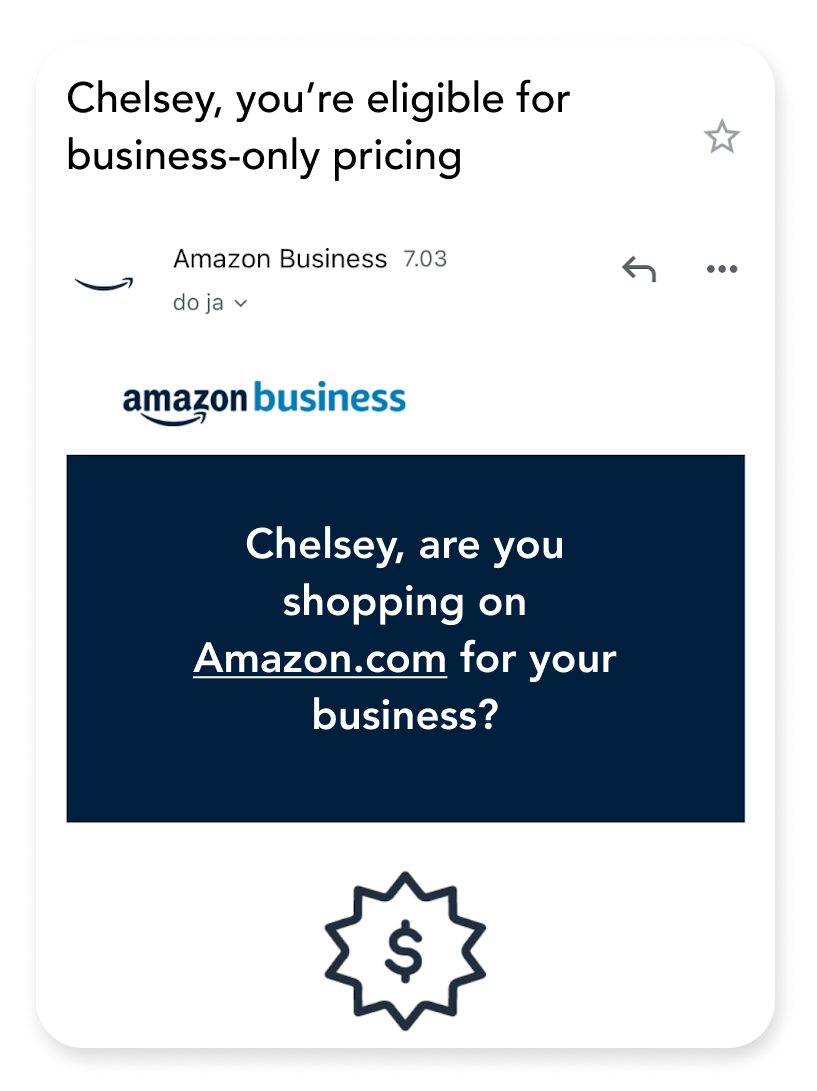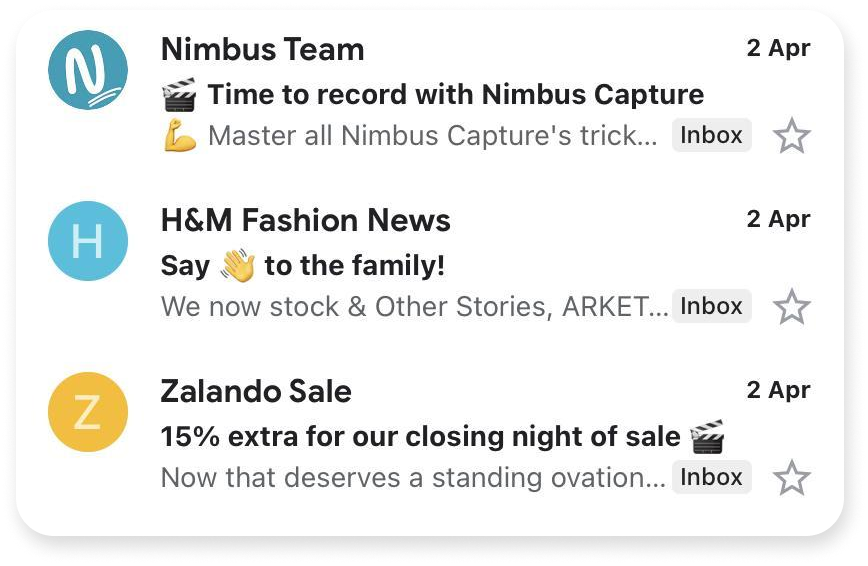Email marketing remains one of the most effective forms of communication. A well-structured email strategy can increase brand awareness and have a real impact on sales while building loyalty and trust with customers. In addition, a thoughtfully designed campaign helps a brand stand out from competing marketing efforts.
The following guide outlines reliable principles that will help you maximize the effectiveness of your email marketing efforts. These practices aim to improve performance, ensure consistency, and enhance the overall experience for recipients.
Sender name and email address
Before a recipient reads the subject line or message content, attention often goes to the sender. The sender name and email address play a key role in whether the message gets opened, ignored, or marked as spam. These elements influence brand credibility and affect the reputation of your email domain.
It is important to focus on both the technical and visual aspects of the sender identity. Avoid common mistakes and create immediate trust with your audience from the first interaction.
Avoid no-reply addresses
Email is a two-way communication channel. Using a no-reply address prevents people from responding and can be perceived negatively by recipients and mailbox providers. Such an approach may lower deliverability, damage your domain’s reputation, or raise the likelihood of ending up in the spam folder. Instead, use an email address that is clearly connected to your company or product and makes it obvious who the sender is.
Domain configuration
Email authentication methods like SPF, DKIM, and DMARC are now required by major email providers such as Google and Yahoo. These standards verify that a message originates from a trusted source and confirm the identity of the sender. They protect your brand and your subscribers from spoofing and phishing attempts.
Large-scale sending requires additional technical configuration. Domain alignment is essential, meaning the sender domain visible in the inbox must match the domain in the DKIM signature and SPF record. Another key requirement is a properly configured PTR record, which confirms that the IP address used to send the email belongs to your domain. These technical elements help improve deliverability and prevent your emails from getting caught in spam filters.
Use a consistent and recognizable sender name
When scanning their inboxes, people usually don’t read every message in detail. Instead, they quickly glance through the list. A recognizable and consistent sender name builds trust, helps with brand identification, and increases the chances that someone will engage with your message.
Stick to one version of your sender name that clearly connects to your company or product. If you want to give your emails a more personal tone, you can test formats that include a first name, such as “Tomek from Customer Support.” This kind of approach suggests that a real person is behind the message, which often leads to higher engagement and a more positive impression.

Subject line and preheader
When someone receives your email, the subject line and preheader form the first point of contact with your content. These elements need to work instantly. Their role is to grab attention, spark interest, and hint at the value inside the message. The decision to open the email often happens here, so it’s worth investing time in getting them right.
Personalizing the subject line
Including the recipient’s first name in the subject line is one of the simplest and most effective ways to improve open rates. It signals that the message was created with the individual in mind, which increases curiosity and encourages engagement.

Emojis
A well-chosen emoji can give your message a friendly, approachable tone and catch the reader’s eye before they even start reading the subject line. Used wisely, emojis add personality and make emails stand out in a crowded inbox.
Moderation is key. Too many emojis can make the message feel overly promotional or even trigger spam filters. One or two emojis are usually enough to enhance the subject without overwhelming it.

Avoid overly aggressive language
All caps and multiple exclamation points can raise red flags for both readers and spam filters. Rather than relying on attention-grabbing tricks, focus on delivering a clear and compelling message. A well-crafted subject line doesn’t need exaggeration. What matters most is that it communicates value and captures interest in a straightforward way.
Optimize subject line length for mobile
Subject lines on mobile devices are displayed with limited character space. Most email apps show only the first 40 characters, which means longer subject lines may be cut off automatically. To ensure clarity and impact, place the most important information and keywords at the beginning.
Preheader
The preheader is an additional text field that appears next to the subject line in the inbox preview. Its content can influence whether the email gets opened. Think of it as a natural continuation of the subject line. Rather than repeating the same words, use it to add extra context, highlight a benefit, or include a subtle prompt to take action.
How to structure an effective email
Even the best subject line and a recognizable sender name won’t make an impact if the message content fails to meet the reader’s expectations. The body of the email plays a key role in determining whether the recipient stays engaged, clicks a button, or takes the desired action. Below is a proven framework for building high-performing emails, along with practical tips worth applying to every campaign.
Start with the header
The first element a user sees after opening an email is the header. While it may seem like a small detail, it has a strong influence on how the entire message is perceived. The header helps the recipient quickly understand who the message is from and how to interpret its content.
It’s a good idea to include:
- your brand’s logo, ideally in the top-left corner, which reinforces visual consistency and builds trust,
- a link to the online version of the message, especially useful if the email does not display correctly.
A simple, well-organized header helps establish context right away and avoids unnecessary confusion.
Move to the main content
The body of the email is where the core message lives. Whether you’re sharing an offer, inviting someone to take action, or announcing something new, the content should be clear, concise, and focused on a single, specific goal. Well-structured communication makes it more likely that the recipient will read through the message and follow through on what you want them to do.
How do you craft effective body content?
- Focus on one clear message. Avoid mixing multiple goals in a single email.
- Break content into short paragraphs. Use headings and bullet points to improve readability.
- Choose system fonts like Arial or Verdana to ensure proper display across email clients.
- Keep the design light. Minimize heavy visuals and aim for a clean layout that loads quickly and feels easy on the eyes.
Include a strong CTA
Every effective email needs a clear and visible call to action, also known as a CTA. This element plays a crucial role in guiding the recipient toward a specific outcome, such as clicking a link, making a purchase, or completing a registration.
Place the CTA button where it naturally draws attention, ideally near the top of the email. For longer messages, consider repeating it at the end to make sure readers can easily act after reviewing the full content.
Don’t forget the footer!
The footer is a required element of any email campaign that complies with legal regulations. Under GDPR and electronic marketing laws, every recipient must be given an easy way to unsubscribe and access information about how their personal data is being processed. Omitting these details can lead to a loss of trust and serious legal consequences.
At the same time, the footer offers an opportunity to strengthen your brand image and encourage continued engagement. It should serve not only a functional purpose, but also a strategic one.
What should a footer include?
- An unsubscribe link that is easy to find and written in clear, understandable language.
- Information about data privacy and a link to your privacy policy, supporting transparency in how data is processed.
- Certifications, awards, or partnerships that emphasize your brand’s professionalism and credibility.
- Links to mobile apps, loyalty programs, or social media channels to keep the audience engaged beyond the inbox.
Data hygiene
A clean, up-to-date, and well-managed mailing list is the foundation of successful email marketing. High-quality data directly contributes to better deliverability, stronger subscriber engagement, and a healthier sender reputation. Below are key practices that will help you maintain the quality of your mailing list over time.
Use double opt-in
Always implement double opt-in as a standard for new subscriptions. After filling out a sign-up form, the user receives a confirmation email with a link to verify their interest. The subscription becomes active only after that link is clicked.
This approach helps ensure that:
- the email address belongs to the person who submitted it,
- the subscriber has given clear and informed consent to receive communication,
- incorrect, fake, or non-existent addresses are kept out of your list.
Double opt-in reduces the risk of misuse, such as someone signing up others without permission, and helps lower bounce and unsubscribe rates. It also serves as proof of consent under data protection regulations like GDPR.
Beyond compliance, this method improves your deliverability and sender reputation by helping you build a list made up of active and genuinely interested contacts. Over time, it becomes one of the most valuable steps toward effective and responsible email marketing.
One-click unsubscribe and reCAPTCHA
Current best practices recommend that the unsubscribe process should be as simple as possible. Recipients should be able to opt out with a single click, without having to confirm their decision, log in, or complete any forms. A straightforward approach like this supports compliance, builds trust, and helps reduce spam complaints.
To protect the process from abuse, consider implementing reCAPTCHA. Although the goal of one-click unsubscribe is full automation and ease, open unsubscribe links can be exploited by bots that remove users without their consent.
Using reCAPTCHA, especially the invisible version, allows you to verify that the action was performed by a human without interrupting the user experience. This way, you maintain simplicity for the subscriber while adding a layer of protection against unauthorized requests.
Segment your mailing list
Audience segmentation is one of the core elements of effective marketing communication. It allows you to divide your contact base into specific groups, for example, based on interests, behaviors, or demographic characteristics. Tailoring your content to these segments helps increase open and click rates while reducing the number of unsubscribes.
You can build segments using a variety of data sources.
◾ Declarative data – Information provided by the user, such as name, gender, birthdate, location, or product preferences. This kind of input supports the creation of detailed audience profiles and lays the groundwork for meaningful personalization.
◾ Website engagement – Data showing which pages the user visits, how much time they spend on them, and how frequently they return. Understanding these patterns helps identify current interests and decision-making stages.
◾ Campaign interactions – Opens, clicks, or no activity in response to your emails. These signals make it easier to refine future communication based on user engagement.
◾ Custom events – Information from loyalty programs, mobile apps, CRM platforms, or in-store POS systems. Such context expands your view of the customer journey and supports messaging that reflects their real-time needs.
All of this can be put to work through MessageFlow Segments, a real-time audience segmentation tool. Segments are created based on flexible rules and updated automatically, even while email, SMS, or mobile push campaigns are running. As a result, your messages consistently reach the right people at the right moment.
Invest in thoughtful and effective email marketing
The success of email marketing depends on consistent execution across multiple areas. Attention to technical foundations like domain setup and unsubscribe flow is essential, but so is understanding your audience and delivering relevant, well-crafted messages. Smart segmentation, compelling content, and clear calls to action all help drive engagement and improve conversion rates.
If you’re looking to grow your email campaigns using proven strategies and modern tools, get in touch with our team. Discover how our platform can streamline your campaigns and boost results.